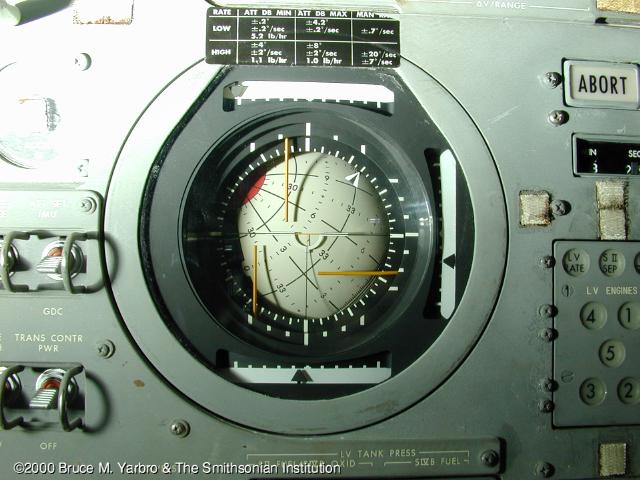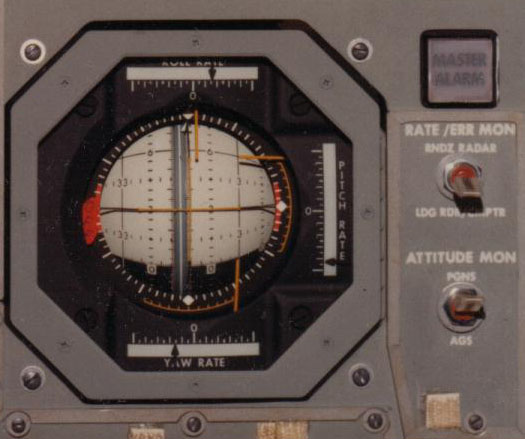The following is an extract for the
Apollo 8 Flight Journal, Day 1. Used with permission.
The FD/AI (Flight Director/Attitude Indicator) or "8-ball" is one of
the most important instruments in the spacecraft. Designers had
originally intended to give the crew three separate displays to show
their attitude; one each for roll, pitch and yaw. Being pilots, the
crews quickly threw out the three displays for a development of the
artificial horizon familiar from aircraft instrument panels.
In an aircraft, the Earth's horizon provides an obvious reference
against which the artificial horizon displays attitude. In a
spacecraft, such an obvious reference may not exist so the inertial
platform at the centre of the IMU (Inertial Measurement Unit) provides
one - a reference that is constant relative to the stars, known as an
'inertial' reference. The basic function of the FDAI is to display the
spacecraft's attitude with respect to the orientation of this platform.
Pitch and yaw can be read off the ball directly; roll is shown by a
pointer around the edge of the 8-ball. Three meters around the display
show the rate of rotation around the three axes. Three additional
orange needles in front of the ball graphically display the difference
between the current and desired attitude of the spacecraft.



